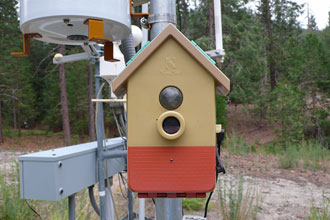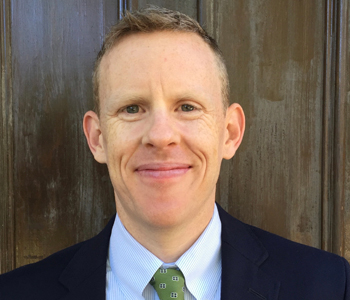Jennifer Gabrys
Program Earth: Environmental Sensing Technology and the Making of a Computational Planet
University of Minnesota Press
368 pages, 7 x 10 inches
9780816693122
Program Earth addresses the rise of sensor technologies for monitoring environments. Sensors have been promoted within digital technology spaces as devices that are meant to become ubiquitous and connect up to enable new orders of efficiency, speed and environmental management.
However, while these sales pitches are now familiar to many people through Internet of Things applications, from smart refrigerators to energy meters, many of the applications for sensors are unfolding throughout wider environments, from smart cities to transport infrastructures, as well as environmental sensing for air quality, wildlife migration and citizen engagement.
Program Earth asks: Why are these technologies proliferating now? What new environments and subjects do they generate? And what practices and experiences do they enable?
I look at three distinct areas where environmental sensors are in extensive use, including “Wild Sensing,” “Pollution Sensing,” and “Urban Sensing.” These concrete examples of sensors at work traverse an experimental sensor forest in California, a biological field station in Finnish Lapland, and a smart urban zone in London, among other sensorized sites.
Across these instances of sensors at work, I consider how these technologies are generating distinct ways of programming environments and environmental relations. By “programming” I am referring less to a process of “controlling” environments, and more to the extended ways in which computational technologies inform and materialize the subjects, environments and relations that are sensed. In order to be monitored, environments and entities have to be operationalized in particular ways.
But at the same time, these monitoring programs often generate unexpected results. For instance, environmental sensors are often taken up in citizen sensing engagements, where the monitoring of air pollution, energy use and more is meant to make participants more informed environmental citizens. Yet these programs often do not go according to plan, and the collection of sensor data gives rise to a much different array of political and social effects.
In this way, I suggest that sensor technologies are co-constitutive of environments, have environmental effects, and also in-form environmentalist practices, but often in unpredictable ways.
One of the key objectives in Program Earth is to rework theories of sensing by decentering the human subject that is meant to be the key locus through which sensation is understood.
To do this, I draw on philosopher and mathematician Alfred North Whitehead to draw attention to the environments of sense in and through which sensing subjects concresce and operate. Whitehead’s notion of the subject-superject is one critical angle for how I engage with sensors not merely as devices sensing and generating data about environments “out there.” Instead, I suggest that sensors present ways of “tuning” in to environments, where the conditions of tuning are also distributed through environments.
Alongside Whitehead, I draw on the work of philosopher and engineer Gilbert Simondon and his important work on the milieus in and through which technologies form, stabilize and operate. For both of these thinkers, the subject is not a pre-formed entity for verifying and validating experiences through a primarily cognitive register. Instead, subjects are always in formation with the environments and other entities with which they are in relation.
With these two theoretical alignments, I am able to shift my attention to consider how sensors and environments are co-constituted, along with the more-than-humans, concerned citizens, and multiple other entities that populate these technological worlds.
In this register, I am then also informed by a rich array of feminist technoscience, from Isabelle Stengers to Donna Haraway, Lucy Suchman and Kim TallBear, who draw attention to the ways in which the formation of particular socio-technical worlds always expresses political commitments with distinct and uneven effects. Stengers’ work is particularly important in this regard, since while she engages thoroughly with the neutral metaphysics that Whitehead develops, she also attends to the ethical and political consequences of committing to the formation of particular worlds.
So when environmental sensors are promoted as a technology for enhancing and advancing the city—as a smart city—we might ask with the help of these particular thinkers: Why has the “problem” of the city been developed in this way? How has this distinct technological framing of the city overlooked or sidestepped other urban problems? Who is able to “act” upon the problem of the city when it is understood to require the installation of pervasive sensing technologies? Who and what are not accounted for in these figurations and worldings—and how might these figurations be developed otherwise?
On one level, Program Earth covers a wide range of topics, from forests and webcams to migration and climate change, garbage patches in oceans and air pollution in urban areas, smart cities and digital participation, as well as urban development. A prospective reader could approach any one of these sections and find a unique trajectory through the material. For instance, an urbanist could focus only on the “Urban Sensing” section, while someone engaged with environmental science could focus on the “Wild Sensing” and “Pollution Sensing” sections.
On another level, the introduction does set out some of the thinking and practicing with sensors and environmental monitoring that I have been engaged with since the early 2000s. Ideally, a reader would encounter this section first to be able to scan the environmental sensing technologies included in the book, as well as to consider the particular way in which environments and environmental processes are foregrounded when working through the operations of sensor technologies.
With that said, often one of the first ways I encounter new books of interest is to skip quickly from the introduction to the bibliography. If prospective readers were to do the same with Program Earth, they might find a rather wide assortment of literatures, from philosophy and science and technology studies, to computational studies, environmental science texts and more. This study is necessarily transdisciplinary, but at the same time attempts to consolidate work around the core topic of environmental sensing technologies from a perspective that attempts to open up the often tech-centric approaches to these devices to consider their wider implications for our socio-political and cultural ways of life.
Monitoring station with Bird Box Cam at James Reserve. This CENS monitoring station included weather observation, and was a testbed that contributed data to the U.S. National Ecological Observatory Network (NEON).

Program Earth is very much written as a companion text to the ongoing practice-based research that I am developing through the collaborative project, Citizen Sense. The Citizen Sense project investigates the use of low-cost environmental monitoring technologies that are increasingly pervasive and that carry the promise of making users of these technologies more equipped and capable environmental citizens.
It goes without saying that we are at a critical moment when it comes to attending to and tuning in to environments under stress. However, from climate change to air pollution, many of the promoted “solutions” to environmental problems are often presented as depoliticized technological approaches by which we are meant to be able to engineer our way out of our collective dilemmas.
Program Earth attempts to rethink how these problems are cast, not to eliminate sensor technologies, but instead to make the case that different and more open and indeterminate engagements with these technologies could generate different political possibilities.
In this way, the book engages with the wider set of developments related to environmental sensing so that a more informed approach might be developed in relation to sensing technologies. Yet it does not offer a prescriptive solution for how to proceed with the increasing spread of sensor technologies. Instead, it offers a set of critical, creative and experimental resources for asking why these technologies have gained a foothold in the way that they have. And it suggests that we might encounter these technologies differently so that other environments and environmental relations—along with political subjects—could be formed.
While the text is written as a theoretical and empirical account, it is very much aligned with sensor technology practices that I am collaboratively undertaking. In this way, I hope that Program Earth might then generate related theoretical and practical inquires, that at once offer us strategies for analyzing and rethinking technologies, while also reworking and adopting them in more generative and generous arrangements.


.png)

We don't put paywalls. We don't distract you with ads. We don't sell your data.
Please help to keep this running!